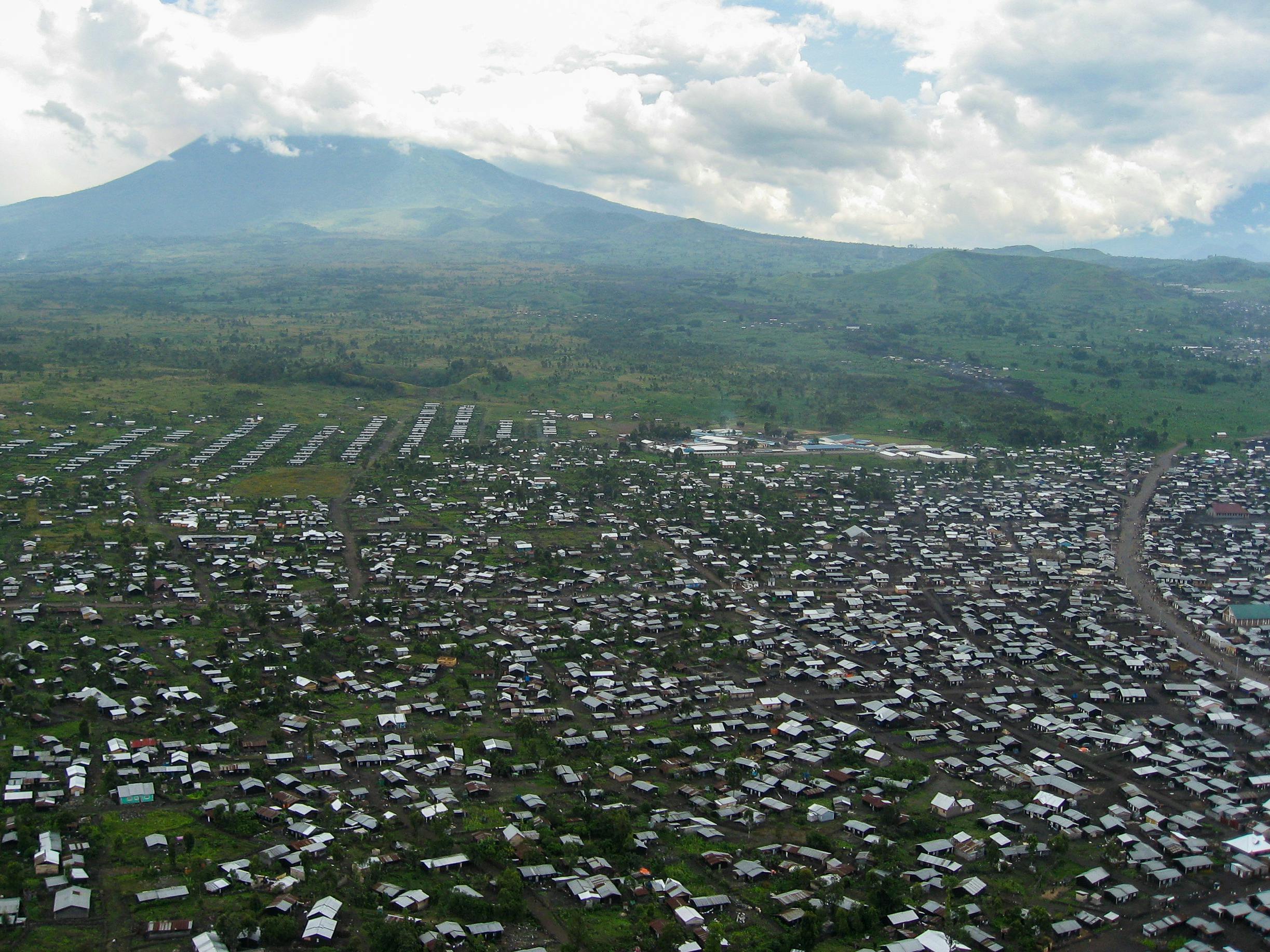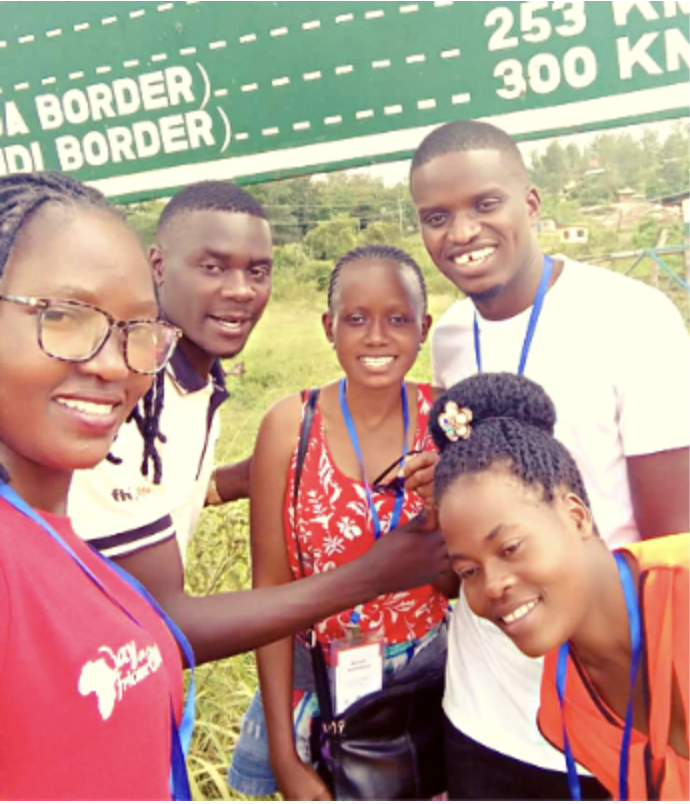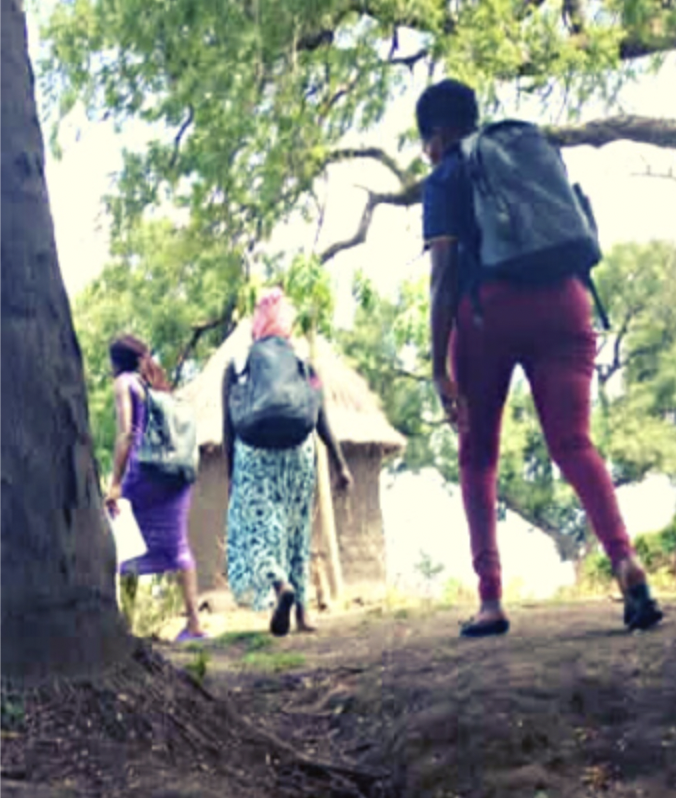
Conducting a Violence Against Children and Youth Survey (VACS) among humanitarian-affected populations in Uganda
14th August 2022By:

Chi-Chi Undie Technical Director and Senior Associate, Population Council
Reliable data about violence in humanitarian settings is urgently needed.
Violence against children is a global crisis affecting close to 1 billion children annually with devastating health consequences for their physical, emotional, and social development (1). Children in humanitarian settings face an increased risk of violence due to the disruption of protective social structures during emergencies such as natural disasters and conflicts (2). However, there is a limited evidence base to inform violence prevention and response programs in humanitarian settings (3, 4).
As part of the Rooted Reflections blog series, guest authors Peter Kisaakye, Francis Obare, George Odwe, Yohannes Wado, and Chi-Chi Undie, share their experiences implementing the first-ever HVACS, gathering vital data about violence against refugee children, and overcoming related challenges with a view to informing future research in similar contexts.
Background to the first-ever Humanitarian Violence Against Children and Youth Surveys (HVACS) in Uganda
Guidance developed in 2020
Together for Girls, the Centers for Disease Control and Prevention (CDC) and the International Rescue Committee developed guidance for implementing an HVACS, with funding from Global Affairs Canada. They are also engaged in the corresponding Data to Action process.
Implementation in 2022
The Baobab Research Program Consortium led this between February and April 2022. In collaboration with the Office of the Prime Minister (OPM), Uganda; the UNHCR Regional Bureau for the East and Horn of Africa and Great Lakes region; UNHCR Uganda; and UNHCR Uganda implementing partners.
Generating evidence through fieldwork
The Violence Against Children and Youth Survey (VACS) used a split-sample approach – that is, enumeration areas were designated for interviews with either females-only or males-only to protect the confidentiality of respondents and eliminate the chances of a perpetrator and victim of sexual violence from the same locale being interviewed. In addition, the survey was introduced in the settlements as a ‘Health and Life Experiences’ study with children and young people in refugee settings in Uganda to protect respondents and study teams.
The survey was implemented across all 13 refugee settlements in Uganda, among 4,693 households, including 2,137 household heads, 1,529 female, and 1,027 male refugees aged 13-24 years.
The main goal of the VACS carried out by Baobab was to generate evidence on the magnitude, consequences, and implications of violence against children in refugee contexts in Uganda to inform a multi-stakeholder, multi-sectoral response to violence against children prevention and management in such settings.

Fieldwork strategies and experiences
A strategy that we found valuable involved identifying team leaders and interviewers who were well-acquainted with refugee settlements in Uganda, and strengthening their capacity to collect quality data on violence against children in an ethical manner.
Training methodology
In preparation for fieldwork, a total of 26 team leaders and 56 interviewers drawn from the Refugee Alumni Networks of the OPM, UNHCR, and, UNHCR implementing partners were identified and trained using CDC’s VACS training methodology. Team leaders and interviewers comprised a mix of refugees and nationals with experience working in humanitarian settings in Uganda. The training sought to enhance their knowledge of data collection methods and technologies in general, and of specific issues related to violence against children and other sexual and reproductive health and rights issues.
Enhanced care
Another data collection strategy entailed incorporating service providers into the data collection teams to enhance care among child/young adult survivors and their families.
Besides distributing information on resources for support services to participants and providing referrals for acute cases of violence, gender-based violence (GBV) caseworkers/counsellors (drawn from UNHCR implementing partner organizations) accompanied the data collection teams to provide first-line psychosocial support to respondents who requested it, or who showed signs of distress during the interview.
Our decision to engage gender-based violence caseworkers in this way was motivated by the recognition that psychological distress could be triggered by sensitive questions in the survey.
Engaging key stakeholders
As with any fieldwork endeavor, understanding (and adhering to) community entry processes in refugee contexts was critical for gaining access to sampled households and buy-in from household heads, in addition to fostering study participation. Moreover, it was imperative for engaging key stakeholders across a range of sectors, whose collaboration was particularly important for eventual data interpretation and the development of future actions based on the Humanitarian Violence Against Children and Youth Survey (HVACS) findings.
We found that humanitarian setting-centered Technical Working Groups related to child protection, gender-based violence, and assessment (for instance) were key to guiding our community entry approach and ensuring the Humanitarian Violence Against Children and Youth Survey (HVACS) was appropriate for implementation among the population concerned. Furthermore, obtaining study approval and introduction letters from the OPM provided legitimacy for the study, while facilitating our entry into the settlements.
Settlement leaders (OPM staff, Refugee Welfare Council members, and settlement commandants) in the refugee settlements were instrumental in making in-person introductions on the ground and providing permission to the data collection team to access the settlements and sampled zones.
Navigating challenges
Despite the use of these and other strategies to smoothen the fieldwork process, we inevitably faced some challenges. Some households could not be traced because they had relocated to other sites outside the sampled zones. Many refugees relocate from their initial settlement locations for various reasons, including employment-seeking, return migration, urban residential preferences to gain access to better services (health and education), engaging in small-scale trade, and the desire to live among members of their ethnic group.
Furthermore, a few households could not be traced because they were known in the community by names that varied from those documented in settlement records (e.g., by their children’s names or nicknames). In many of these cases, community guides (i.e., block leaders, village health teams) helped with the identification of the sampled households for interview.
In some instances, household structures (particularly, those within shared compounds) made innovation essential to ensure that confidentiality was maintained during interviews. In some cases, unsampled households within the same compound were curious about the data collection team’s visit to sampled households. When privacy was not feasible within such compounds, interviews were conducted in private locations within the community, such as empty school classrooms, or religious institutions (churches or mosques).

Interviewers were assigned in advance to zones in which they spoke the language concerned and understood the culture. Nonetheless, language barriers posed a challenge in some zones when certain respondents did not speak any of the study languages (English, Kiswahili, Kinyabwisha, Acholi, and Juba Arabic). Such respondents were ineligible for study participation.
The language barriers also led to modifications in the study’s response plan in cases where gender-based violence caseworkers were not conversant with a language spoken in their zone. These cases were handled by drawing on the services of interpreters, in line with existing practice by implementing partners within these settlements, who maintained a pool of such interpreters to support gender-based violence counseling interventions.
Fieldwork activities were sometimes disrupted due to routine or ongoing activities in refugee settlements, such as food distribution or verification exercises. In addition, some sampled household members were unavailable on market days, while others were away at school. To address this challenge, fieldwork was planned in consultation with UNHCR’s settlement leaders to identify more appropriate days for data collection. Additionally, field teams operated on a flex schedule, which enabled call-backs and the participation of school-going children not available on weekdays.
In summary
In summary, a variety of contextual factors need to be considered for future HVAC surveys, while also building strong collaborations with key partners in the humanitarian context concerned. The foregoing approaches and experiences could inform future research in similar contexts.
References
(1) Robbers GML, Morgan A. Programme potential for the prevention of and response to sexual violence among female refugees: a literature review. Reproductive Health Matters. 2017;25(51):69-89.
(1) Robbers GML, Morgan A. Programme potential for the prevention of and response to sexual violence among female refugees: a literature review. Reproductive Health Matters. 2017;25(51):69-89.
(3) Glass N, Perrin N, Clough A, Desgroppes A, Kaburu F, Melton J, et al. Evaluating the communities care program: best practice for rigorous research to evaluate gender based violence prevention and response programs in humanitarian settings. Conflict and Health. 2018;12(1):1-10.
(4) Hillis S, Mercy J, Amobi A, Kress H. Global prevalence of past-year violence against children: a systematic review and minimum estimates. Pediatrics. 2016;137(3).
About 'Rooted reflections'
This blog is one of three in the ‘Rooted reflections’ series. They are part of the Baobab Research Programme Consortium blog series for documenting reflections, experiences, and learnings that are often left uncaptured by researchers in their implementation of research studies, and by the peer-reviewed literature. The Baobab RPC is an Africa-based, African-led collaboration that is working to change the narrative about the possibilities for sexual and reproductive health and rights research in refugee settings.
Funded by FCDO from 2021 to 2026, Baobab is bringing rigorous, globally-known sexual and reproductive health and rights surveys into refugee settings in the East and Horn of Africa (EHA) for the first time ever, and coupling these with operations research and evidence-informed interventions. Evidence from Baobab will be used to inform the programming and policies of UNHCR and its partners working to respond to the sexual and reproductive health and rights needs of refugees. Baobab is led out of Kenya by the Population Council, Inc., in collaboration with three other Kenya-based institutions: Population Council, Kenya; the African Population and Health Research Center; and Well Made Strategy.

